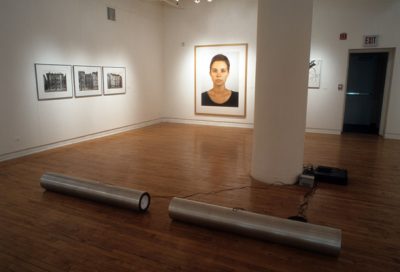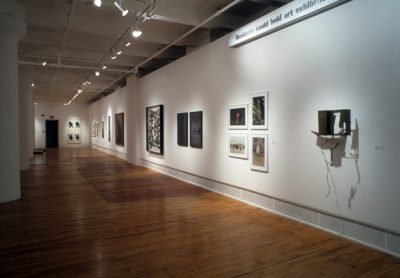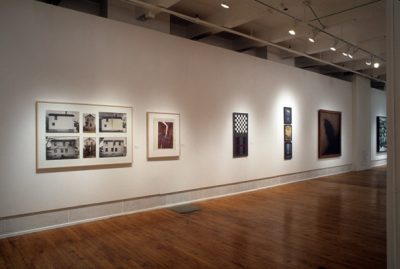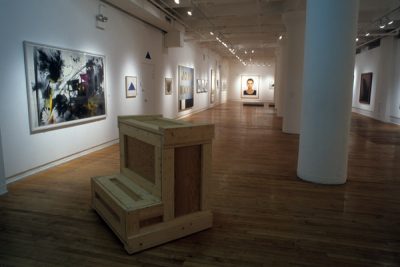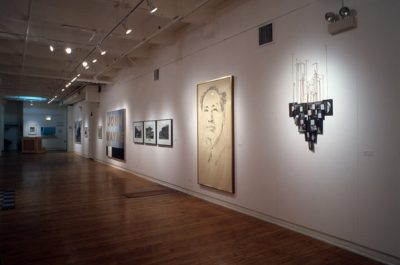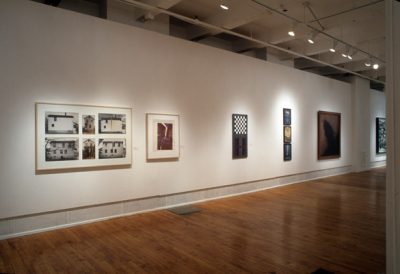Exhibitions
ABOUT THE EXHIBITION
Selected Works from the Refco Collection is part of an ongoing series of exhibitions at Gallery 400 that examines the important roles corporate collections and patronage play in contemporary art. Corporate patronage of the arts has deep roots going back to the Italian Renaissance, where wealthy bankers and merchants began to invest substantial sums into culture. Building vast collections of art as well as grand reputations, the Medici family of Florence became a legendary model of artistic patronage. Additionally, guilds and religious confraternities dedicated significant resources to the construction of what are now considered great monuments of Western art. The motivations of Renaissance collectors were widely disparate, dependent upon economic circumstances as well as individual aesthetic choices. As patrons of ecclesiastical projects, donors sought to assuage their consciences for questionable commercial activities and hoped that their munificence might bring rewards in the afterlife. Others financed major building programs to legitimize and give material expression to their political and cultural leadership in the community. Finally there were, and continue to be, the pleasures attached to the ownership of aesthetic objects, along with the gratification of playing a primary role in the elaborate process of artistic creation and reception.
Stated or unstated, motivations for collecting art from the Renaissance to the present remain fluid and varied. So too are the myriad varieties of patronage. Private collections have become public on certain occasions, as they are often lent, donated, or sold to public institutions. Recently in the United States, private foundations have been formed to acquire, display, and lend works of art. Individual private collections have sometimes overlapped with corporate collections, which may be temporary or permanent. In the market system, where support of artists is often indirect and anonymous, a client, individual, or corporation typically purchases an artwork without ever encountering the artist. By contrast, in a commission, a patron selects an artist to create a work for a particular circumstance or setting, perpetuating a practice that is now more than five centuries old.
Twenty years ago, Frances Dittmer, wife of the founder and chairman of the board of Refco, began acquiring graphic works for the rapidly expanding futures trading firm formed in 1969 in Chicago. The early acquisition of prints by Jasper Johns—First Etchings (1967–68), Grey Alphabet (1968), Decoy (1971), and Land ’s End (1979)—immediately announced Refco ’s ambitious commitment to the arts, which has been borne out continually through the development of its collection of 325 contemporary paintings, sculpture, prints, and installation work. Now the largest commodities brokerage house in the world, Refco has established a reputation for its emphasis on educating clients and risk taking in investment strategies. With offices in Europe and the United States, Refco presents its art collection in New York and Chicago to a primary audience of 550 employees and numerous clients who interact with the art daily in a corporate environment.
ARTISTS
Carl Andre, Richard Artschwager, Matthew Barney, Lothar Baumgarten, Ross Bleckner, Alighiero Boetti, Marcel Broodthaers, Gordon Matta-Clark, Dan Flavin, Hans Haacke, Gary Hill, Annette Lemieux, Sherrie Levine, Ana Mendieta, Annette Messager, Bruce Nauman, Blinky Palermo, Sigmar Polke, Arnulf Rainer, Charles Ray, Gerhard Richter, Thomas Ruff, Ed Ruscha, Kiki Smith, Thomas Struth, Andy Warhol, Bill Woodrow, and Christopher Wool
SUPPORT
Selected Works from the Refco Collection is made possible by the School of Art and Design, the College of Architecture and the Arts, and supported in part by a grant from the Illinois Arts Council, a state agency. Our immeasurable gratitude and appreciation go to Frances R. Dittmer and Thomas Dittmer whose commitment to contemporary art and the development of an exceptional corporate collection have made this exhibition possible. Thanks also to Adam Brooks for his support and assistance with the development and preparation of this exhibition.


